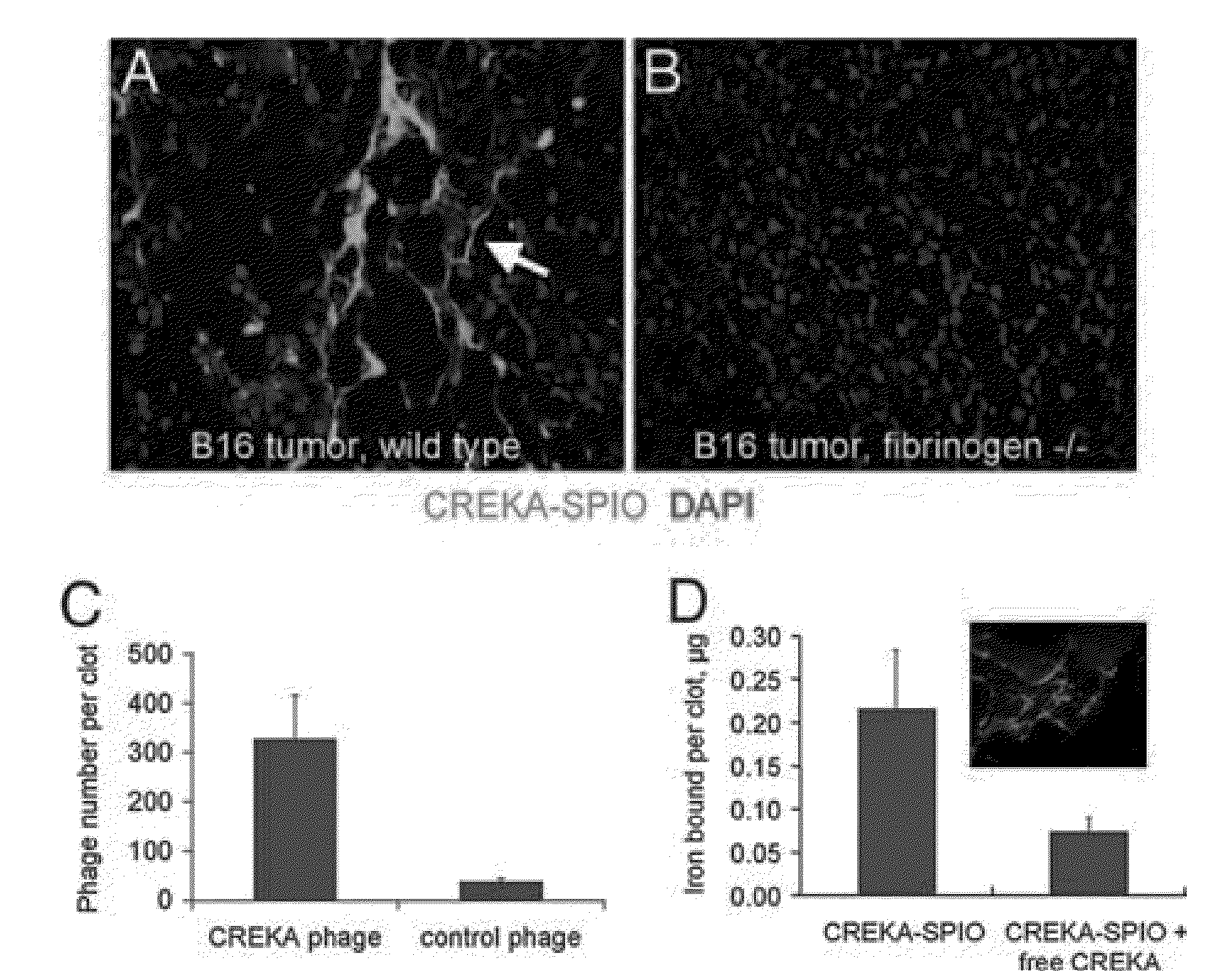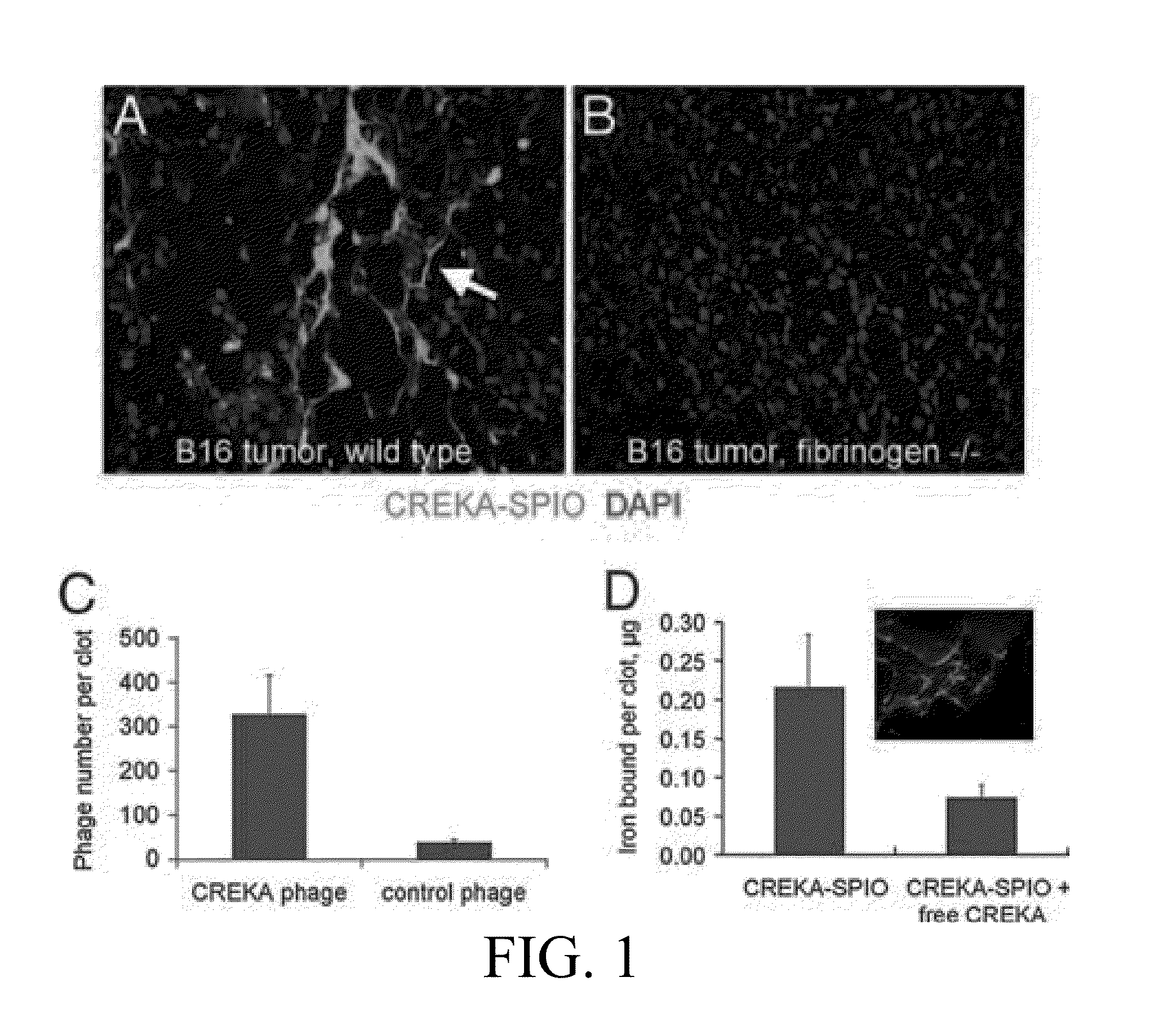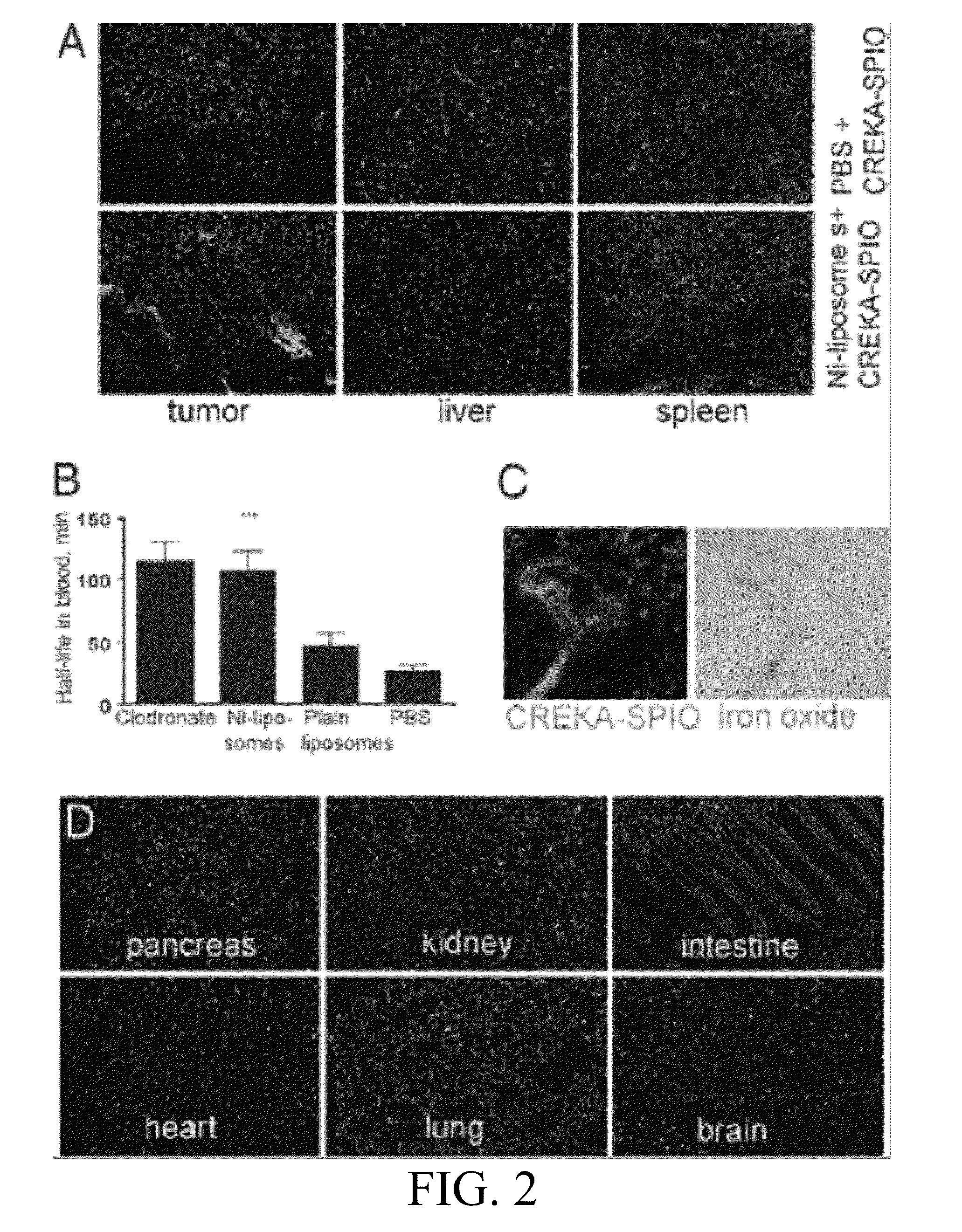Methods and Compositions Related to Clot Binding Compounds
a technology of clots and compounds, applied in the field of molecular medicine and cancer biology, can solve the problems of reducing tumor burden, scarring and loss of normal tissue, and reducing tumor burden, so as to improve tumor burden, slow down the increase or decrease of tumor burden, and enhance clot formation
- Summary
- Abstract
- Description
- Claims
- Application Information
AI Technical Summary
Benefits of technology
Problems solved by technology
Method used
Image
Examples
example 1
1. Example 1
Biomimetic Amplification of Nanoparticle Homing to Tumors
[0183]Nanoparticle-based diagnostics and therapeutics are useful because multiple functions can be built into the particles. One such function is an ability to home to specific sites in the body. Described herein are biomimetic particles that not only home to tumors, but also amplify their own homing. The system is based on a peptide that recognizes clotted plasma proteins and selectively homes to tumors, where it binds to vessel walls and tumor stroma. Iron oxide nanoparticles and liposomes coated with this tumor-homing peptide accumulate in tumor vessels, where they induce additional local clotting, thereby producing new binding sites for more particles. The system mimics platelets, which also circulate freely but accumulate at a diseased site and amplify their own accumulation at that site. The clotting-based amplification greatly enhances tumor imaging, and the addition of a drug carrier function to the particl...
PUM
| Property | Measurement | Unit |
|---|---|---|
| diameter | aaaaa | aaaaa |
| magnetic field | aaaaa | aaaaa |
| molecular weight | aaaaa | aaaaa |
Abstract
Description
Claims
Application Information
 Login to View More
Login to View More - R&D
- Intellectual Property
- Life Sciences
- Materials
- Tech Scout
- Unparalleled Data Quality
- Higher Quality Content
- 60% Fewer Hallucinations
Browse by: Latest US Patents, China's latest patents, Technical Efficacy Thesaurus, Application Domain, Technology Topic, Popular Technical Reports.
© 2025 PatSnap. All rights reserved.Legal|Privacy policy|Modern Slavery Act Transparency Statement|Sitemap|About US| Contact US: help@patsnap.com



